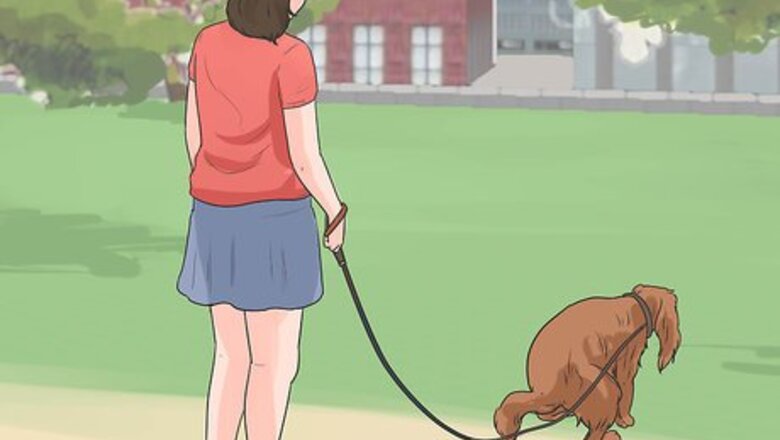
views
X
Research source
Housebreaking Your Cavalier King Charles Spaniel
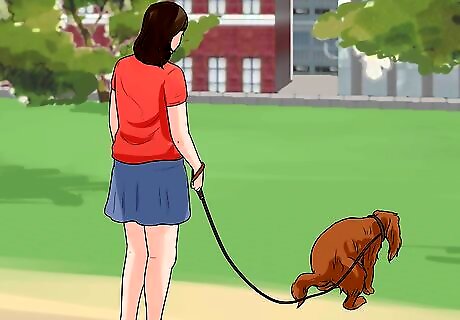
Start training right away. Don't wait to house train your Cavalier. You should begin toilet training him as soon as you bring him home. Take him to the spot where you'd like him to toilet and set him down on the floor or ground. Choose a toileting spot before you bring your dog home and be consistent. Don't change the spot and expect your dog to remember where you'd like him to go.
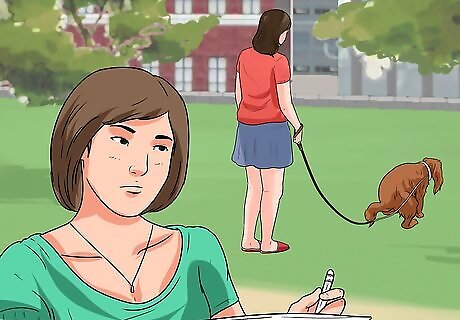
Put him on a schedule while you're training. Once your puppy reaches 8 weeks old, he can hold his bladder for only about two hours. To prevent accidents and encourage him to use the right spot, place him on the toilet spot every half an hour or so. You may want to be in the habit of putting him on the spot about half an hour after feedings. Once your Cavalier is 4 months old, he can usually hold his bladder for up to 4 hours.
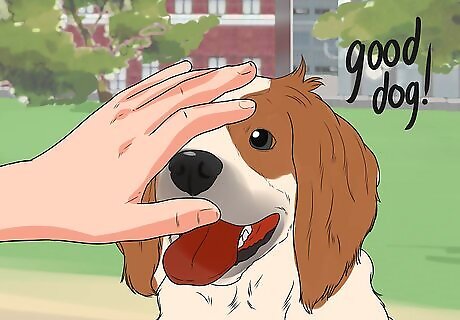
Reward your Cavalier. If your dog moves his bladder or bowel in the toileting spot, give him lots of praise. Cavaliers respond well to positive reinforcement, so you should encourage him to please you. When he realizes that he gets praise just for toileting in that spot, he'll begin using it just to get the verbal reward. In addition to verbal praise like "Good job!", you can also offer treats or let him run around the yard for a while. Cavaliers enjoy the chance to run around and chase birds.
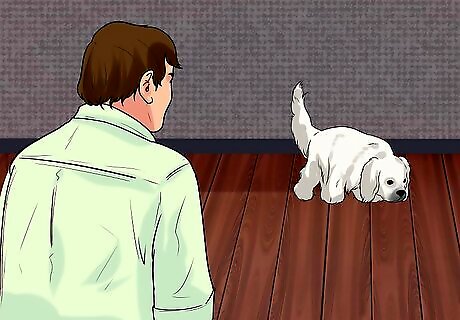
Watch your Cavalier indoors. While you're house training, monitor your dog for signs that he needs to toilet. You might notice your dog sniffing or sidling up to furniture as though he's going to lift his leg. As soon as you see this behavior, set him outside so that he doesn't have an accident in the house. If you won't be home to supervise, put your Cavalier in a crate. He'll be less likely to soil it, so let him outside as soon as you return home. Cavaliers love company, so they're really a good choice for people who can give them lots of attention.
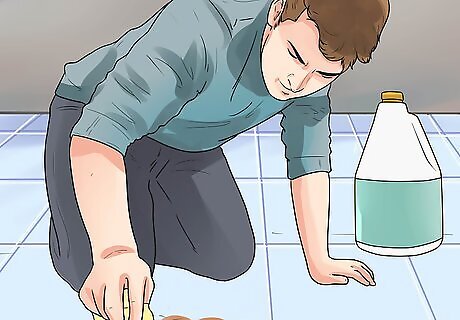
Respond to accidents. Chances are your Cavalier will have an accident at some point during training. Instead of yelling or getting angry at your dog, ignore the behavior and immediately clean up the mess. Use a cleaning product with special enzymes that completely remove the smell of urine. If your dog continues to smell urine, he'll keep toileting in that spot.
Crate Training Your Cavalier King Charles Spaniel
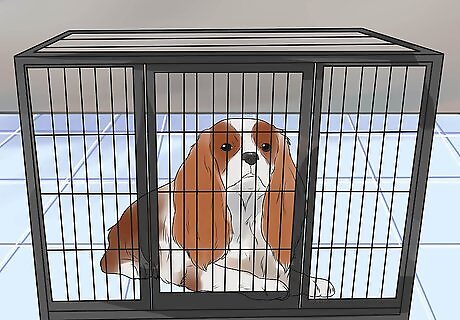
Make the crate comfortable. Choose a crate that lets your Cavalier lie on his side with his legs stretched out, or stand up without banging his head. You should avoid an overly large cage which may not feel cozy enough for your dog. A crate that's restricted in size stops your dog from soiling the space. Give him a comfortable bed and a bowl of water. Encourage your Cavalier to investigate the crate by sprinkling treats inside the bed. The goal is to make a cozy place for your dog to go in order to feel safe and secure. Avoid using the crate as a punishment. Place a toy or two inside, so that he begins to associate the crate with interesting things.
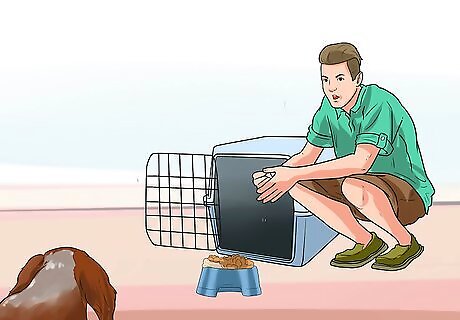
Let your dog get used to the crate. Stay home while training your dog to use his crate. Leave the crate door open and let him enter on his own. Once he's inside, feed him a meal. While he's eating, shut the door briefly and tell him how clever he is. Open the door before he begins whining and so he doesn't feel trapped. Over time, increase how long you keep the door shut. This will get him used to being in the crate. Avoid opening the door when he is crying or he will think that crying gets him released. Leave the door open when he's not inside so that he can come and go if he needs a safe space.
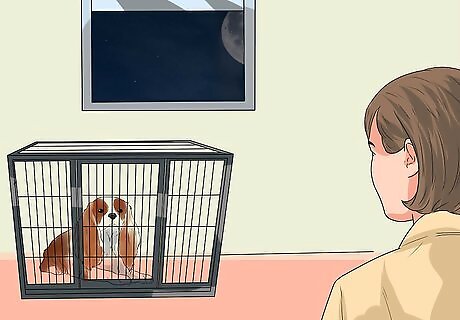
Train your dog to use the crate at night. If you'd like to keep your Cavalier safe and out of the way at night, his crate should be comfortable and in a quiet place. Make sure the crate is out of the way of foot traffic so people's movements won't disturb him. Get him settled in his crate and leave the room while he's not crying. Remember that your dog will need to toilet overnight, especially if he's young. Set an alarm and let your dog out to toilet every 2 or 3 hours.
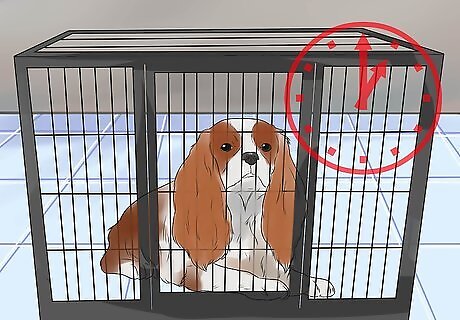
Use the crate when you're not home. Make sure your dog is completely comfortable with the crate before you start leaving him alone in it. Once your Cavalier is comfortable being left alone for 30 minutes at a time, you can begin gradually increasing the amount of time he's left alone. Never make a big deal when you leave or return and always let your dog out to toilet once you come back. Never crate your dog for more than 4 hours at a time (unless it's overnight). Younger dogs can only handle an hour or two while dogs that are 15 weeks or older can usually do 3 or 4 hours.
Socializing and Training Your Cavalier King Charles Spaniel
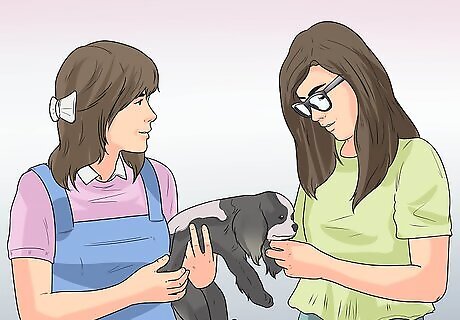
Expose your dog to others. It's important to give your Cavalier new experiences, especially while he's still very young (before 18 weeks old). He'll consider the new sights and sounds to be normal which can help build his confidence. This socialization will also prevent over-anxious behavior as he gets older. Make sure your Cavalier meets a wide range of people, dogs, and experiences. You can take your dog to a socialization class run by your vet or a reputable trainer in the area.
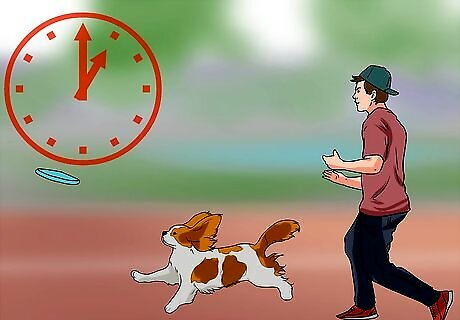
Choose good times to train. Train your Cavalier in small doses and often. Keep the sessions to five minutes at a time and do them three times a day. Your dog will respond better to this than if you do one long half-hour session. Choose a time when your dog isn't hungry or tired, so he pays attention. Stop the session if he looses interest. Always try to end on a positive note, with a command you know your dog can do.
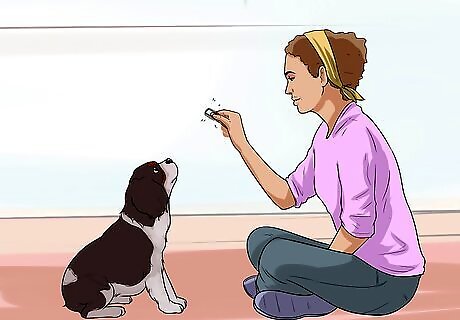
Clicker train your dog. Use a clicker to teach your dog to associate a click-clack sound with receiving a reward when he obeys a command. Practice by throwing a treat on the floor and let your Cavalier eat it. As soon as he goes to the treat, press the clicker. Repeat this till he associates the click-clack sound with looking for a treat. Start giving commands and when he obeys, press the clicker as his reward. For example, when your Cavalier toilets outside, immediately press the clicker so he knows he's being rewarded for toileting in the right place.
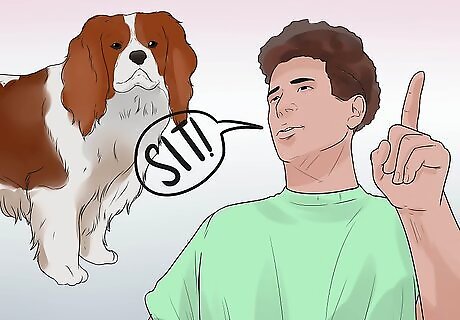
Use verbal commands. When you use the clicker training, always start with a verbal command word. For example, say "Sit" and click once he follows the command. Once he's comfortable following verbal commands with the clicker reward, stop using the clicker, but continue to use verbal commands. For example, you could run a few steps away from your Cavalier while slapping your leg and calling his name. He'll instinctively want to keep close to you, so this is good practice in responding to his name.
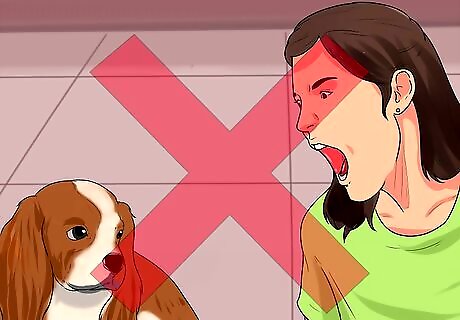
Never hit or yell at your dog. Your Cavalier will only associate punishment with you instead of the action you dislike. This can damage your relationship, actually making it harder to train him. Instead, use positive reinforcement with verbal praise and rewards like treats or exercise. If your dog misbehaves, you can firmly say "No." Avoid giving him a lot of attention or telling him off. Any attention is a reward for your dog. If your Cavalier grabs something he shouldn't and you haven't trained him to give it back, distract him with a toy or some food. Take the object while he's distracted.

















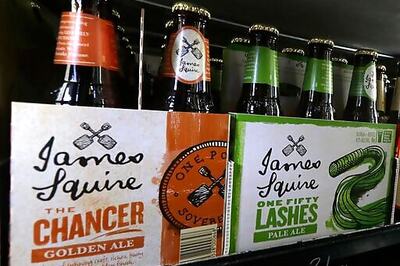
Comments
0 comment